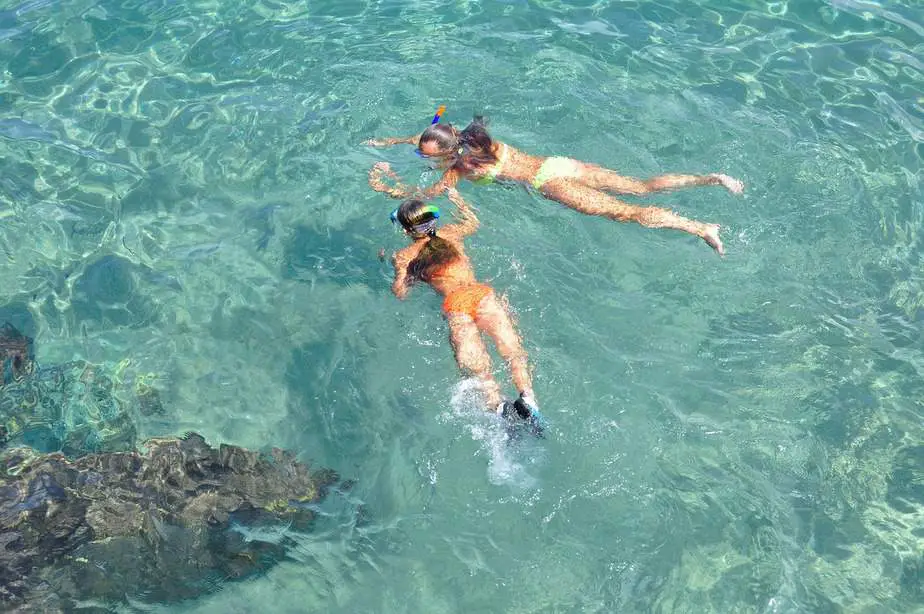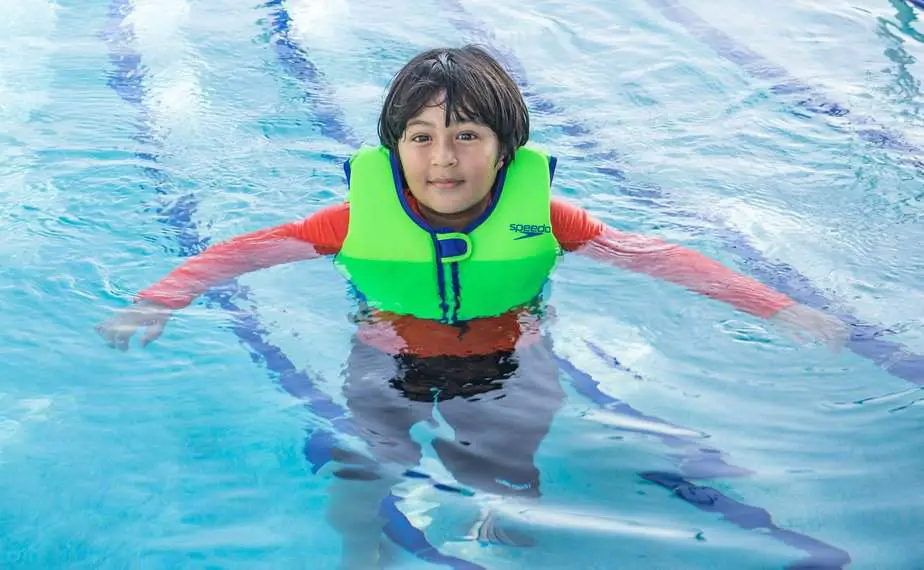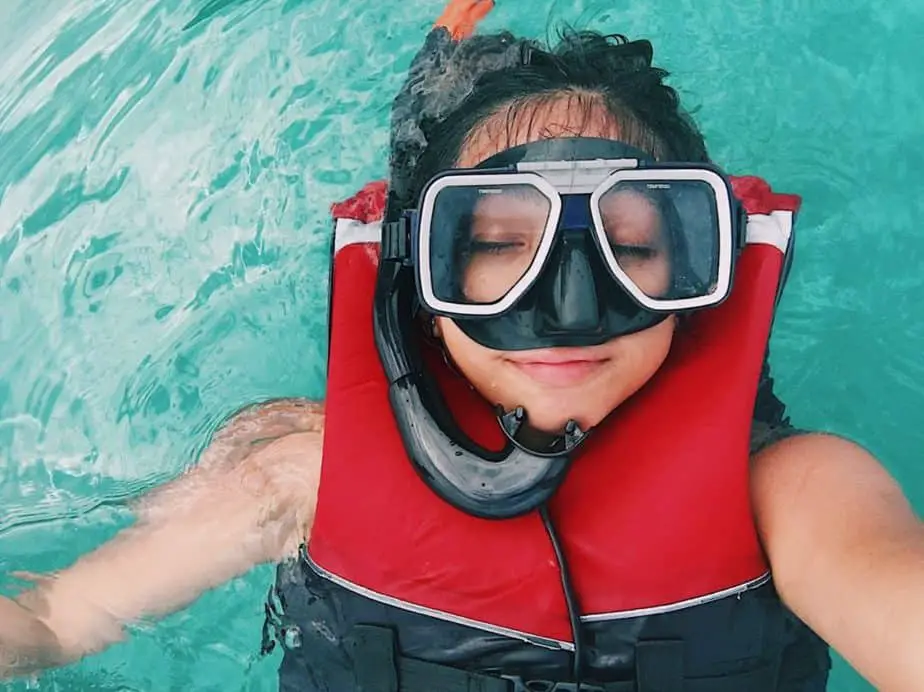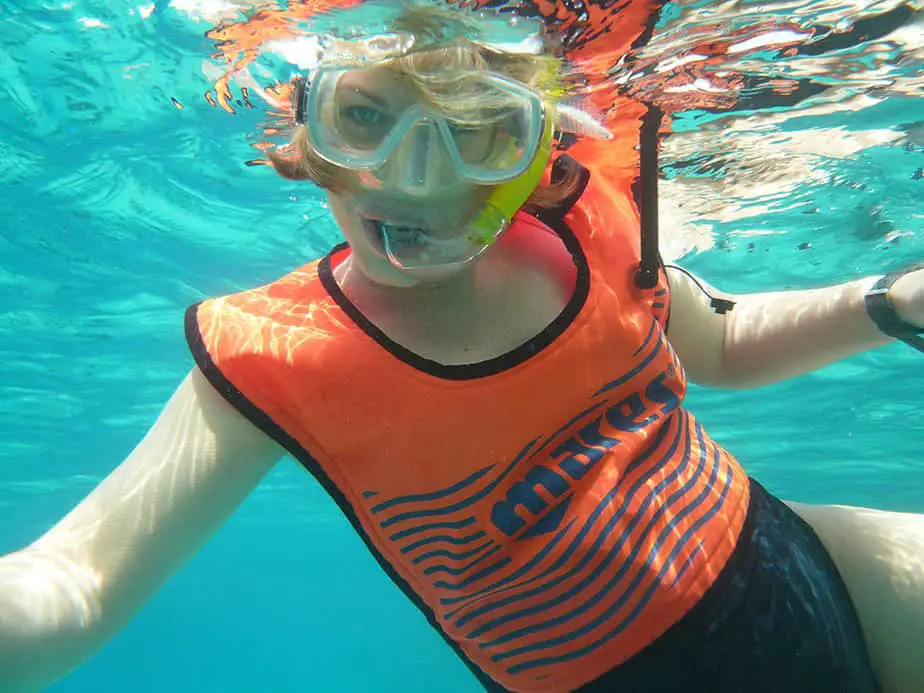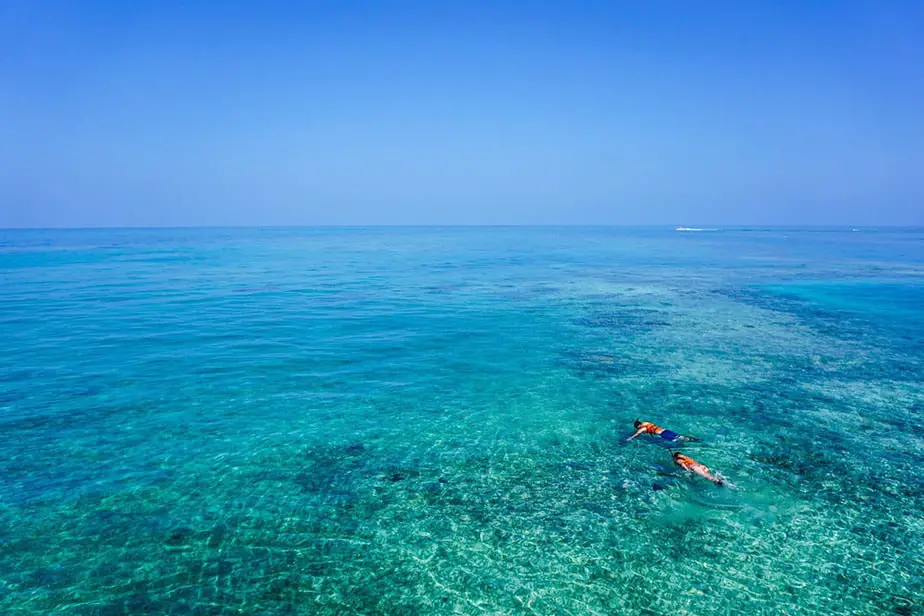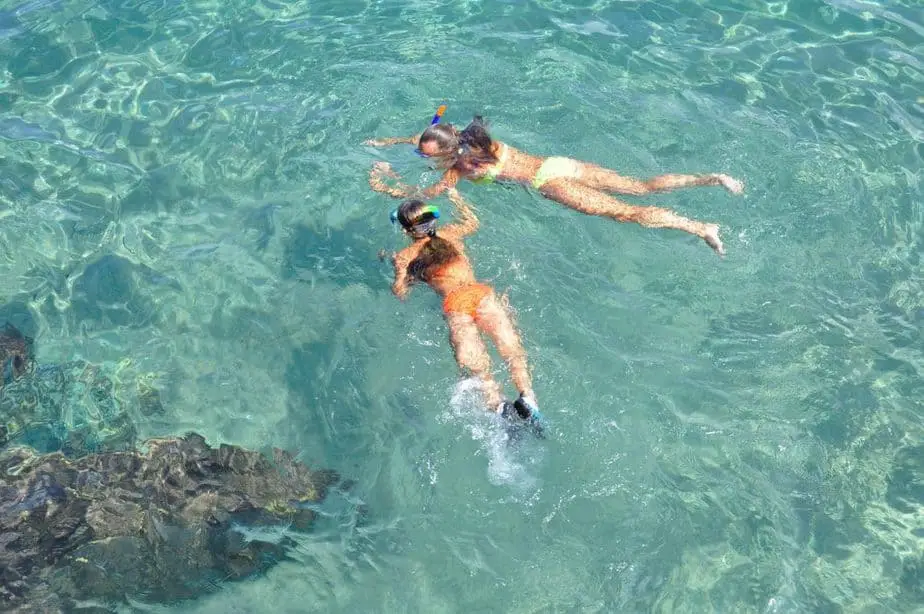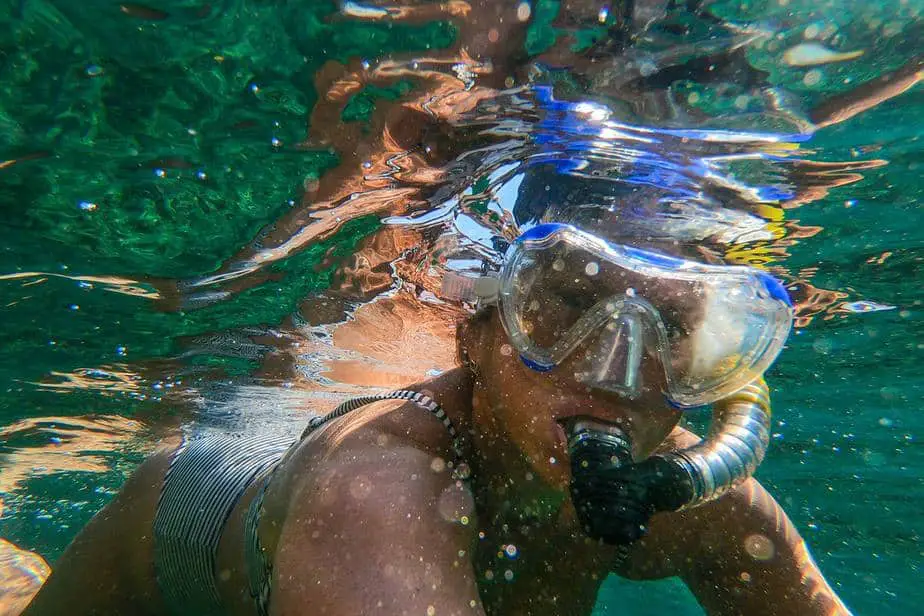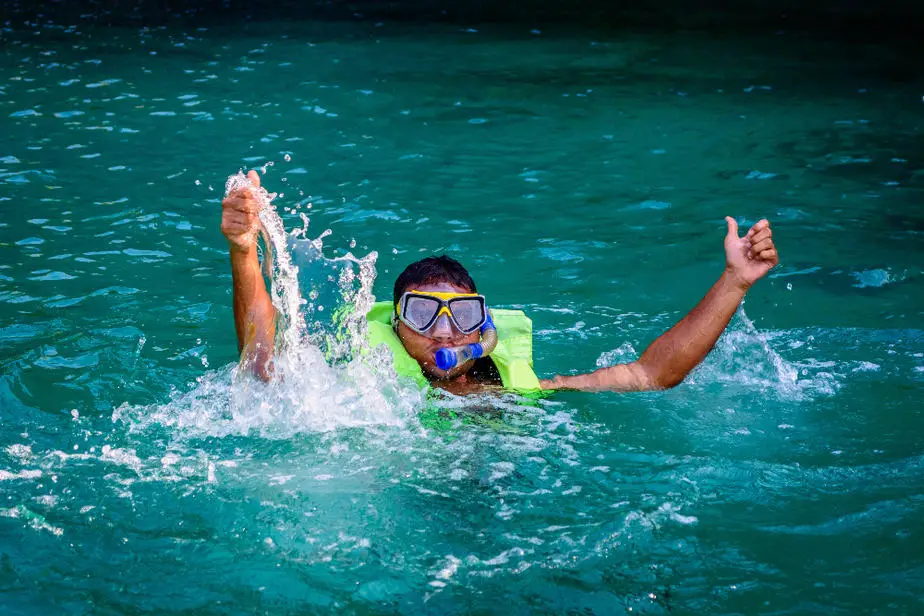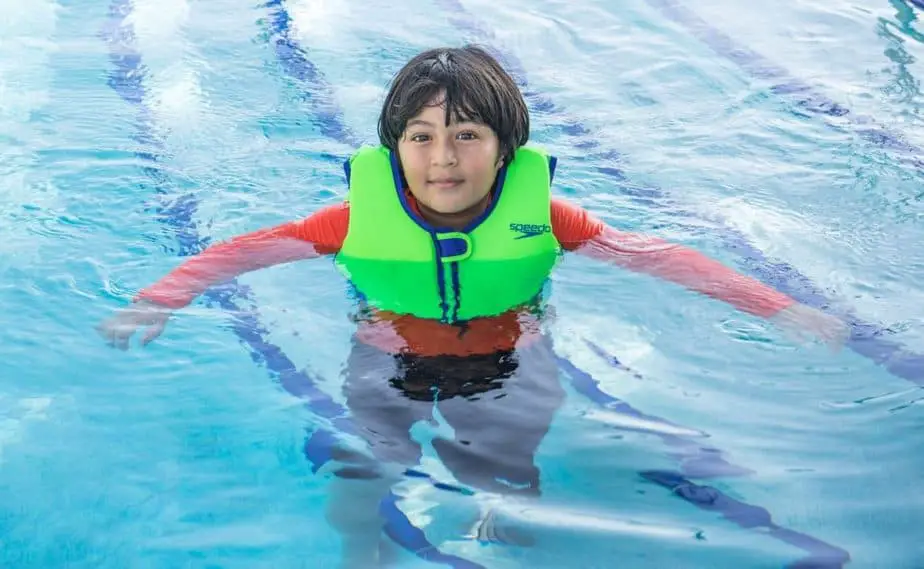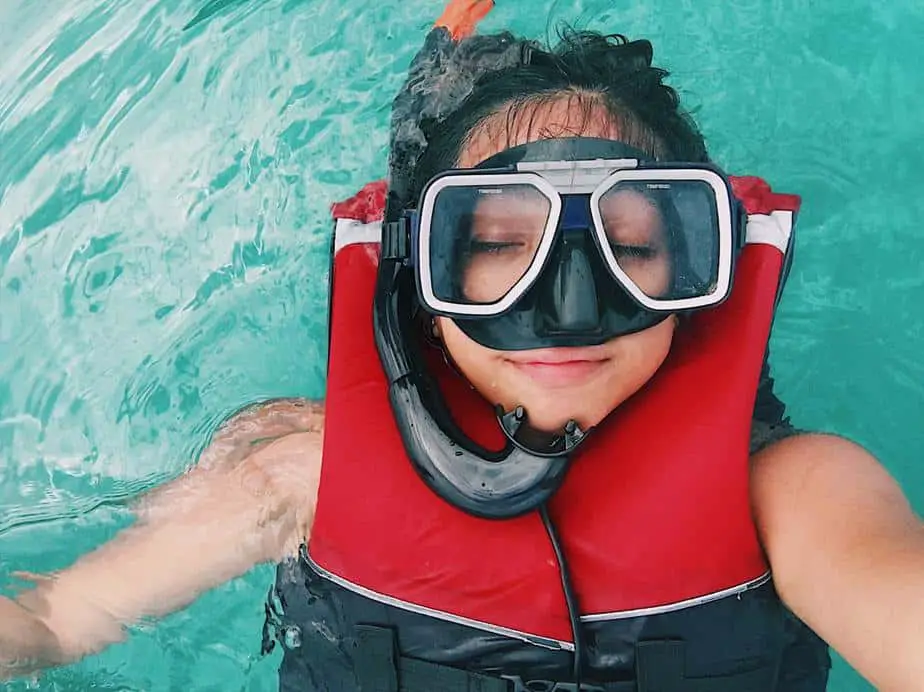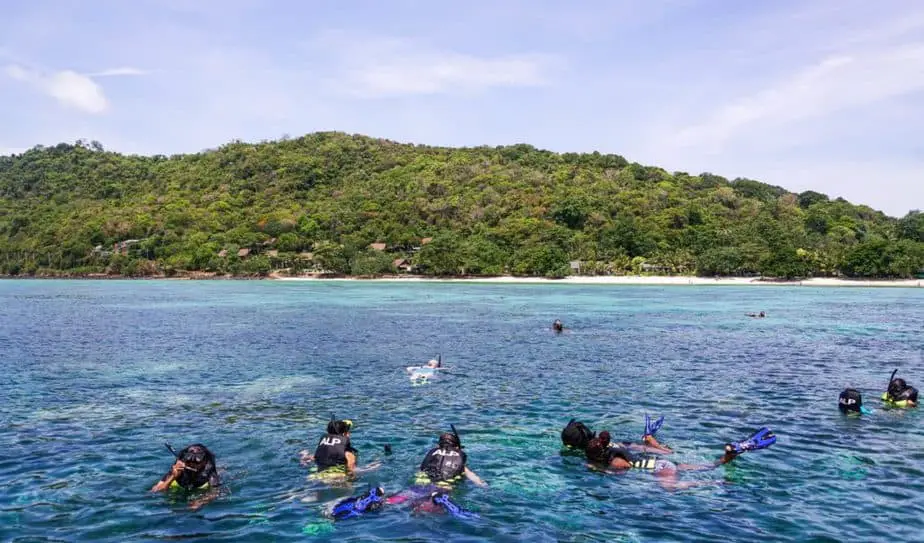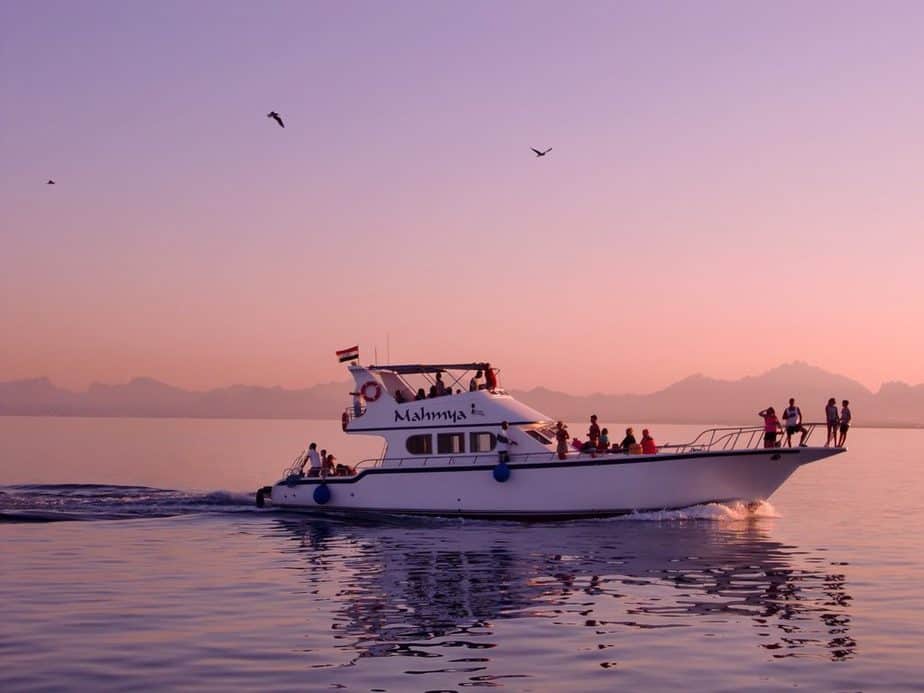If you’ve never snorkeled before you might be wondering what equipment you need to get started. The most important pieces of equipment are obviously the snorkel and mask, but can you get away with not using fins?
Technically, you can snorkel without fins. However, many snorkelers find fins to be a valuable tool to help them swim farther and faster, which improves their overall snorkeling experience. Furthermore, snorkel fins can also help you stay afloat and swim out of riptides. So even though you don’t need fins to snorkel, we still recommend it. In this guide we’ll cover the arguments for and against using snorkel fins to give you an idea of what it’s like to snorkel without fins.
Benefits of Snorkel Fins
If you decide not to wear snorkel fins, you will be missing out on many benefits. With fins, you can:
- Swim faster. The extra surface area provided by the fin blade means that each thrust you perform will send you farther and faster than kicking your feet without fins. This is useful for covering larger distances so that you can see more. If you are ever caught by a riptide, swim perpendicular to the waves so that you can escape the currents faster with fins on.
- Keep your feet warm. Especially if you wear an open heel fin, you will most likely be wearing neoprene socks or dive booties to protect your skin from chafing. This also provides extra insulation and will keep your feet warm in cold water. In the case of closed heel fins, you can wear them barefoot and the fin itself can provide some warmth.
- Dive underwater. Ever notice a scuba diver go underwater without wearing any fins? (Hint: no). That’s because with fins, the extra power you get from each thrust can propel yourself downwards more easily. And if you’re an experienced snorkeler, you can also dive down to get a closer look at the underwater sights. Of course, you won’t get as deep as a scuba diver, but the option is there.
- Increase buoyancy. This might sound like a contradiction of the point above, but fins help you stay afloat. The material that fins are made of have small amounts of gas trapped in its fibres. This gas makes the fins slightly buoyant, allowing your feet to stay afloat with little effort. The same is true for wetsuits; many snorkelers find that even without wearing a personal flotation device they can float more easily in a wetsuit. And when you decide to dive underwater, the extra power you get per kick far exceeds the amount of buoyancy pushing against you.
Disadvantages
It seems like having fins provides a lot of great advantages, but are there any downsides? Here are some reasons why you might want to snorkel without fins.
- Cost. You shouldn’t just buy a snorkeling fin by itself. It is highly recommended that you also buy a pair of neoprene socks or dive booties to complement the fins. Socks or booties can protect your feet from rubbing against the fin each time you kick. Thus, you have to buy at least two things which increases the cost. Granted, these items aren’t particularly expensive, but if you don’t plan to snorkel much, then it becomes difficult to justify spending over $50 for the combo. You can consider renting fins instead if you only plan to snorkel once or twice (more on this below).
- They take up bag space. When traveling, your bags have limited space and bringing another piece of snorkeling gear may be difficult. Especially if you own a pair of long fins, those can be around two feet in length. There are much shorter travel fins which can help those who want to save bag space. These smaller fins don’t provide as much thrust per kick, but that’s the tradeoff for saving space.
- Easy to damage coral. The coral reefs have suffered serious damage due to snorkelers accidentally kicking coral with their fins and breaking off branches. This is especially easy to do if you wear long fins. Even just kicking up sediment and covering the coral can harm them because it blocks the sunlight. Of course, this can be avoided if you’re careful, but accidents are much more likely to occur with long or wide snorkel fins.
- Difficult to walk around in. Walking with fins is incredibly awkward and even a little dangerous. It’s really easy to trip over the fin and hurt yourself. When worn, it is recommended that you walk backwards to reduce your chances of tripping over the fin blade. Some people find this cumbersome, so they put their fins on in the water (yet another cumbersome all its own). Either way, it can be awkward and annoying for beginners to go through this, and some might prefer not to bother with them at all.
When Should You Wear Snorkel Fins?
If you plan on going on more snorkeling trips in the future, you should consider owning your gear instead of renting it. Especially if you want to snorkel longer and swim farther, wearing fins will help you do that. If you are not a strong swimmer, you are only making it difficult for yourself by limiting how far you can travel in the water. Furthermore, you’ll just get tired faster and cut the snorkeling session short.
In addition, we always recommend beginners start out in calmer waters by the shore instead of out in the boat. That way when you get tired, reaching dry land is only a couple of minutes away. However, sometimes strong currents known as riptides can pull you far into the sea unexpectedly. These currents are hard to swim against, and will easily tire out a beginner. With fins, you may be able to swim out of it, or at least stay afloat long enough until the waves die down.
Next up, fins can help you freedive if you want to see marine life up close. After all, fins can do more than help you swim faster horizontally, but vertically as well. That way, you can reach the bottom and resurface faster, which maximizes your breath and conserves energy.
Lastly, if you are snorkeling with others, and they are all wearing fins except you, then expect to be left behind. Furthermore, it’s not fun to be the first one out of the water when everybody is still enjoying their snorkeling session thanks to their fins.
When Can You Ditch the Fins?
If you are snorkeling once just to cross it off your bucket list, then we can understand not wanting to invest so much into a one-time trip. You can either rent a pair of fins or do some very light snorkeling close to the shore. That way, you can still stay safe without needing to own a pair of fins.
We recommend snorkeling in warmer, tropical climates with little to no currents for the most stress-free and enjoyable experience. If you’re not sure where to get started, we recommend checking out this site on tropical snorkeling spots to get an idea of where you could start. Many places have beautiful beaches where you can start snorkeling right off the bat, with only a snorkel and mask.
Just be sure that wherever you decide to go that the conditions are safe. That means the marine life is relatively safe, the water is warm, the currents are calm, and there are other people around that can provide help in case of an emergency.
Buying vs. Renting Fins
We’ve briefly touched on this topic throughout this article, but there some additional things to keep in mind. Obviously renting is going to be cheaper than buying. But if you end up renting four or five times then the renting cost will eventually exceed the price of buying a fin. But that’s not the only issue.
When you are looking to buy a fin, you have so many options available. You have the time to carefully research the exact type of fin you want – open heel or closed heel, short fin or long fin. You can find one that looks the way you want, and is the exact size that you want. Also, since it’s your fin, you know that you’ll take good care of it and that it is hygienic. A well fitting snorkel fin will fit snug, be comfortable to wear for long periods, and will improve your snorkeling session.
On the other hand, when it comes to renting, it’s like opening up pandora’s box. You don’t know what kind of selection they have. Whether they have the right size, or if it’s comfortable, or even if it’s been properly cleaned! Who knows how many people with questionable hygiene have worn the exact fin you’re renting?
With that said, if you are renting fins, then at least you don’t have to worry about bag space when traveling. Also, if this is the only time you’re going to be snorkeling, then you will definitely save money.
Essential Snorkeling Gear (No Fins Required!)
Most people commonly think that the essential pieces of snorkeling gear are the mask, snorkel, and fins. As you’ll soon find out that’s not true at all. Since we’re talking technicalities here, you don’t need a pair of fins to snorkel, just the mask, snorkel, and sunscreen.
Mask
If you want to see underwater and protect your eyes, then of course you need a snorkel mask. It is crucial that you find one that fits snug on your face. Unless you want to drain the water from your mask every few minutes, ensuring the silicone skirt on the mask seals tightly against your face is one of the most important things you should do to ensure your snorkeling trip is enjoyable. If you have a beard, then it can be harder to get a tight seal.
It’s very simple to test the integrity of your mask. Once you’ve purchased one, put it on your face with the strap off, and hold it against your face with your fingers. Now inhale through your nose and stop supporting the mask with your hands. If the mask fits well, the suction of air from your nose should keep it in place. Now put the strap on your head and it should feel the same with very light strap pressure.Try using the snorkel with the mask, and see how well they fit together.
The next test you can do is to fill your bathtub with water and submerge your face with the mask and snorkel on. You can do this in a swimming pool for a slightly more authentic experience. You want to make sure your mask doesn’t leak and that you know how to breath with the snorkel.
One of the biggest problems with snorkel masks other than leaking is dealing with fogging. A foggy mask will detract from your enjoyment by impairing your vision. There are some defogging treatments you can do to prevent this from happening. First, clean the lens with toothpaste and a toothbrush. Do not touch the lens with your fingers, as the oils on your fingertips can transfer. If you have a mask with plastic lenses, use dish soap and a washcloth instead to avoid scratching it.
Next, each time before you snorkel, spray the inside of the lens with some anti-fog treatment. Make sure the entire surface has been coated, and resist the urge to touch it with your fingers. Then rinse the mask quickly with salt water or freshwater. Shake off the excess water droplets and put it on your face.
If none of these solutions work and you find yourself out in the water dealing with fog, then the last ditch attempt is to spit on the mask lens. Again, don’t spread the spit with your fingers. Just shake it around until it coats the lens and then rinse with saltwater. If that doesn’t work, then perhaps next time you need to do heat treatment on your mask lens as demonstrated in the video below:
Snorkel
And of course, how could you possibly snorkel without the snorkel? A good snorkel is crucial for an enjoyable snorkeling experience. Personally, we recommend getting a dry snorkel or a snorkel with a splash guard. If you are a beginner, you may accidentally submerge your head too far so that the snorkel is underwater too. Many beginners then end up choking on a mouthful of saltwater, and this may actually end up being a dangerous situation if they start to panic.
To reduce the chances of this, use a dry snorkel. Dry snorkels have a special valve on top that will shut when the snorkel is completely submerged. Sometimes water can enter the snorkel regardless because of a wave or when turning the head sideways. That is why dry snorkels have a special purge valve that will clear out the water out of the tube so you can continue to breathe fresh air, and not choke on water.
Sunscreen
Snorkelers spend a large portion of their time with their back exposed to the sun. As such, they should apply sunscreen with 50+ SPF protection to avoid getting sunburnt. If you are willing to buy some additional snorkel gear, you can consider wearing a rashguard or snorkel vest. These will provide additional coverage so that you have less skin exposed, lowering the amount of sunscreen needed.
How to Snorkel Without Fins
Now that you have your snorkel and mask sorted, it’s time to put them to the test. Here are some tips to help you get started with snorkeling.
Practice in a Safe Environment
Especially if you plan on snorkeling without fins, you can’t be as adventurous as you could otherwise be. Practice putting on your gear and using them. We recommend doing this in a swimming pool or shallow beach so that you can experience what it’s like to breathe underwater.
It can be hard to convince yourself to take a deep breath while underwater. You need to get used to it and feel relaxed. Train your brain that it’s okay to breathe underwater (with a snorkel in your mouth of course). You also need to practice staying afloat and to increase your endurance so that you can actually snorkel for a decent length of time. Be wary of your mask leaking. Wearing it too tight is a common reason, or perhaps facial hair is getting in the way.
Practice kicking around, training your leg muscles to help you move around without fins. If you are not confident in your swimming skills, we recommend wearing a snorkel flotation device. Something like a snorkel vest or even an inflatable noodle is better than nothing. Don’t worry about looking like a weirdo; safety should be your number one priority.
Don’t Panic
Don’t panic and stay calm in the water. Having jittery nerves can cause you to exhaust yourself and make bad decisions. Swimming is a very active sport that consumes plenty of energy. If you’re not pacing yourself, you can use up your stamina in a matter of minutes. Stay calm and swim slowly at a pace that you can breathe slowly using the snorkel.
Keep in mind that a snorkel does make it harder to breathe, so keep your snorkeling session going at a leisurely pace to decrease the amount of breathing required. Unfortunately, not having fins makes this difficult. That is why it’s important you know how to stay afloat with minimal effort to conserve energy. Wearing a flotation device can help with that.
Snorkel in a Calm Spot
Without any fins, you are limited to snorkeling only when it’s calm. Even for experienced swimmers, strong currents can easily pull you out into the sea, even if you’re in shallow waters. To avoid this, we recommend going in the mornings when things are relatively calm. If there are waves, even basic things like entering and exiting the water can be difficult. Snorkel on a beach that has a lifeguard, or go with an experienced snorkeler who can look out for you.
Conclusion – Can You Snorkel Without Fins?
Do you need fins to snorkel? Technically no, but we really think they are beneficial. If cost is an issue, you should consider renting one instead of buying. When you snorkel without fins, you are at risk of exhausting yourself faster or being swept away by currents. That is why we recommend snorkeling in calm waters.
All that you really need to snorkel are the mask and snorkel. Make sure that your mask doesn’t leak or fog up. Make sure that you use a dry snorkel to prevent water from flooding in. One of the most important things about snorkeling is to stay calm. Panic can cause you to expend too much energy and put you at risk of drowning. Furthermore, you should probably practice in a swimming pool if you’re not confident in your swimming skills or how to use the snorkeling equipment.
Most people have a better experience wearing fins while snorkeling, but if you are absolutely against it for some reason, you don’t have to wear them.

